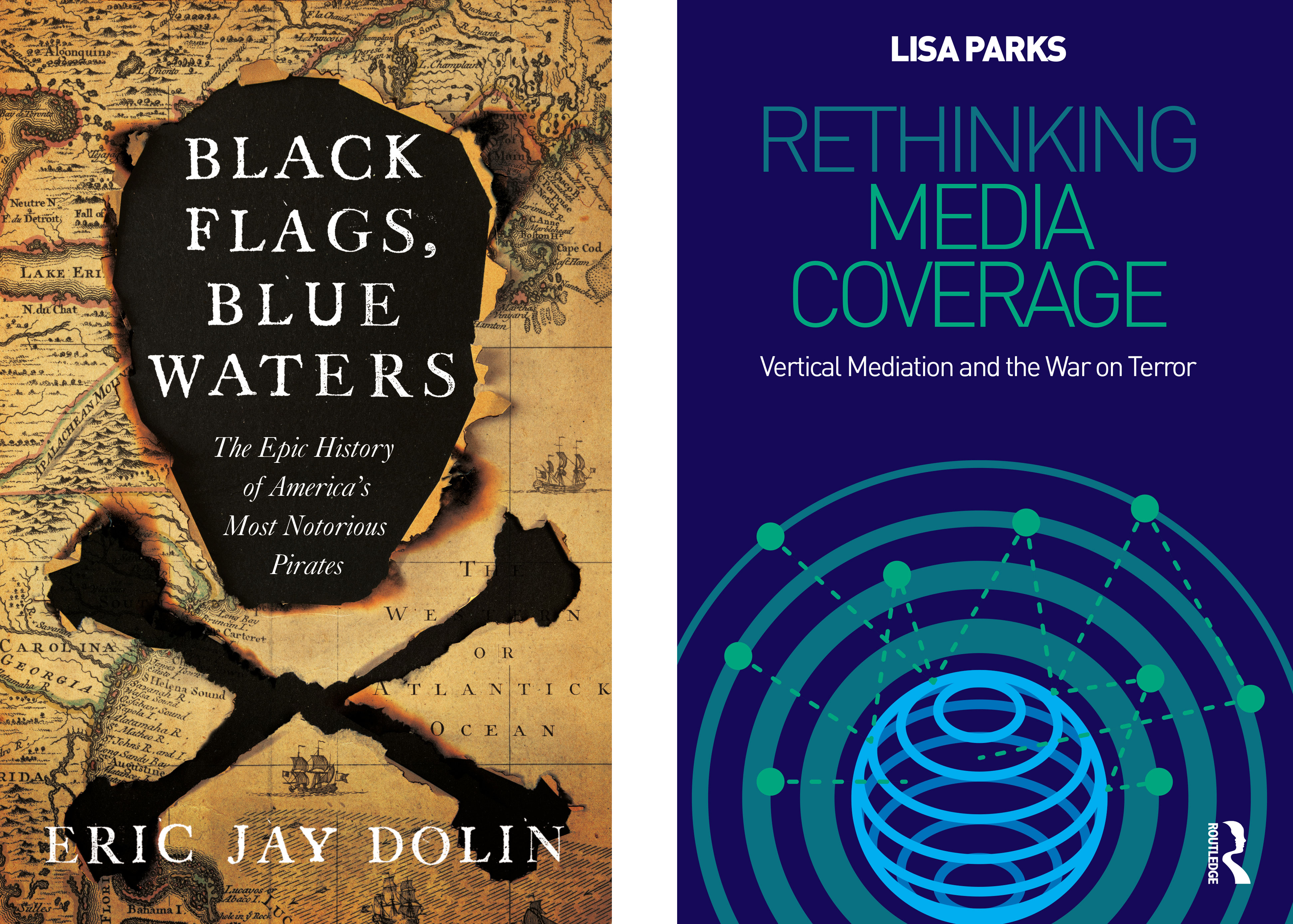Piracy and terror

For Eric Jay Dolin, PhD ’95, finding the topic for his latest book was easy—he talked to his kids. “‘Pirates are cool,’ they said,” Dolin recounts wryly. “‘Write about pirates.’”
So he took their advice, focusing on the “Golden Age” of piracy in America from the late 1600s through the early 1700s in Black Flags, Blue Waters: The Epic History of America’s Most Notorious Pirates (W.W. Norton, 2018).
Despite being what Dolin calls “an omnipresent nefarious force upon the seas,” pirates were for many years welcome in the colonies and helped establish the economies of the New World. “One person’s thief is another’s savior,” he says. “Boston, New York, Charleston, Port Royal—all the major cities were pirate nests.”
Dolin had no prior knowledge of pirates, other than what he’d seen in Pirates of the Caribbean, but the stories of these desperate and violent men drew him in. “I could have spent 20 years researching,” he says.
Pirates never knew who they were going to meet or what weather they would encounter. Most didn’t even know how to swim. “I’m floored by the guts of these men,” says Dolin. “Can you imagine getting into a hundred-foot-long ship and going halfway around the world?” By weaving the sagas of individuals into his in-depth research, he creates a gripping historical narrative. “I’m not a historian,” he says. “I’m a storyteller.”
Lisa Parks, a professor of comparative media studies, brings a different kind of storytelling to her clear and critical examination of changes in the media landscape after 9/11 in her latest book, Rethinking Media Coverage: Vertical Mediation and the War on Terror (Routledge, 2018).
A global media scholar, Parks outlines the many ways in which the United States sought to regain and re-solidify its media, military, and cultural hegemony. She focuses on the “vertical field,” a term she uses to encompass all forms of communication, from internet and radio waves to drones and satellites—and even, in her view, bombs. Media, she says, is a dynamic process used to make ideas and concepts intelligible to others.
Parks begins with the premise that like Pearl Harbor or Sputnik, 9/11 precipitated a massive realignment of national culture and priorities. Then she focuses on how cable news, satellite imagery, airport security, and drone warfare have been used by the “media-industrial complex” since 9/11 to engineer cultural and physical transformations. She details the push for justification of the war in Iraq as an example.
Although Parks is quick to admit that her analysis is mainly academic—and full of media studies jargon—she hopes it will encourage people to think of media not as a series of individual works but as an ever-changing cultural process.
Recent books from the MIT community
The Mobile Workshop: The Tsetse Fly and African Knowledge Production
By Clapperton Chakanetsa Mavhunga, associate professor of Science, Technology, and Society
MIT Press, 2018, $37
Paris and the Cliché of History: The City and Photographs, 1860–1970
By Catherine E. Clark, associate professor of French studies
Oxford University Press, 2018, $74
Health Informatics on FHIR: How HL7’s New API Is Transforming Healthcare
By Mark L. Braunstein ’69
Springer, 2018, $69.66
Peer Coaching at Work: Principles and Practices
By Kathy E. Kram ’72, SM ’73, Polly Parker, Douglas T. Hall, and Ilene C. Wasserman
Stanford University Press, 2018, $27.95
Extracting Innovations: Mining, Energy, and Technological Change in the Digital Age
By Robert K. Perrons, SM ’97, Saleem H. Ali, PhD ’01, Martin J. Clifford, and Tim A. Grice
CRC Press, 2018, $149.95
Send book news to
MITNews@technologyreview.com or
MIT News
1 Main Street, 13th Floor
Cambridge, MA 02142
Keep Reading
Most Popular
Large language models can do jaw-dropping things. But nobody knows exactly why.
And that's a problem. Figuring it out is one of the biggest scientific puzzles of our time and a crucial step towards controlling more powerful future models.
The problem with plug-in hybrids? Their drivers.
Plug-in hybrids are often sold as a transition to EVs, but new data from Europe shows we’re still underestimating the emissions they produce.
Google DeepMind’s new generative model makes Super Mario–like games from scratch
Genie learns how to control games by watching hours and hours of video. It could help train next-gen robots too.
How scientists traced a mysterious covid case back to six toilets
When wastewater surveillance turns into a hunt for a single infected individual, the ethics get tricky.
Stay connected
Get the latest updates from
MIT Technology Review
Discover special offers, top stories, upcoming events, and more.